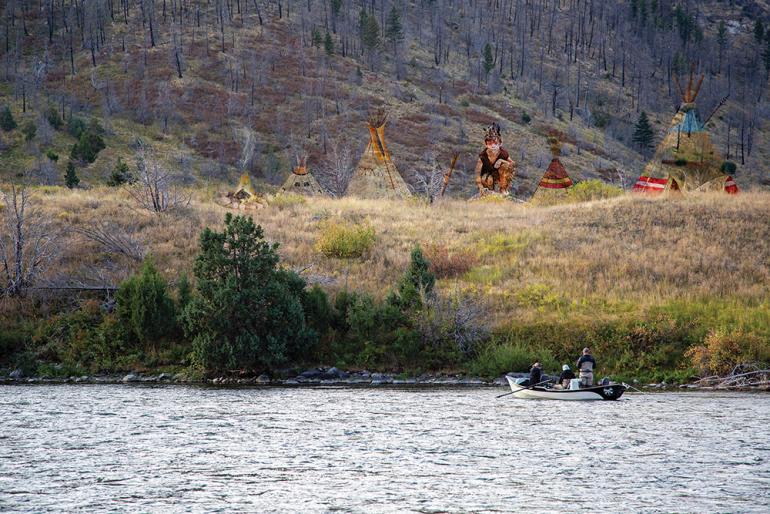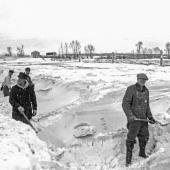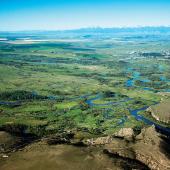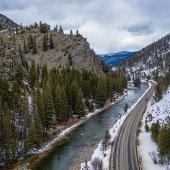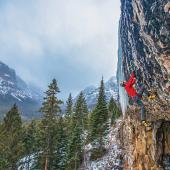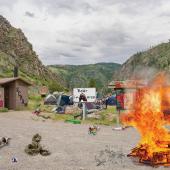Shavings of the Past
A dubious discovery on the banks of the Madison.
A young Indian sat at the top of a rise along a cut bank of the river. The village tipis were scattered behind him on flat ground. He watched the river. He could smell smoke from the cook fires. He could hear voices, children laughing, and the occasional dog bark penetrating the soft melody of the river and breeze through the grass. He was chipping on a small piece of rock.
It’s a good spot.
We were planning to drift the lower section of the Madison River, below Ennis. Vince, our guide, readied the boat as I geared up for the day of fly fishing. There was a second driftboat also at the launch site. I noticed another fisherman sitting on a rock by the river. He was whittling a stick. Donning waders and boots, I watched as thin shavings of wood curled from the blade of his pocketknife and gathered on the ground at his feet. After a few minutes, Vince called, so I hopped into the boat and we pushed out into the river.
We fished the cooler, early-morning hours, drifting slowly until the sun rose from behind the mountains. When it came time for a break, we anchored in the shade of a rock outcropping and poured hot coffee from a thermos. Vince told me that just downriver, there was an old American Indian campsite that still had tipi rings. Would I like to stop and take a look?
I would.
A tipi ring is a circle of stones that held the shelter’s bottom edge in place. When the tribe would move encampments, they would take the poles and animal-hide cover, but leave the stones.
Vince rowed the boat to the edge of the river and we disembarked. We climbed a steep embankment and began wandering around the old campsite. The stone rings took a bit of searching to find, though if one were looking down from a helicopter, they’d be easy to spot. We wandered about, looking for the river-rounded rocks embedded in the tall grass. Once we discovered one, it was easy to find the rest, along with some old firepits. We did not lift any of the stones, so as to not disturb the area.
I wandered off toward a couple large boulders and stood for a moment looking at the river. Then I glanced at the ground, and that’s when it caught my eye.
I spend a lot of my time along the edge of rivers, looking for rocks. After lunch, I usually amble off in search of crystals and jasper and petrified wood. My eye landed on a small rock at my feet. It was yellowish, like rhyolite (the yellow of Yellowstone), and I bent to pick it up. As I did so, another piece caught my attention and I picked that one up as well. Examining them in the sunlight, I observed that they had conchoidal fractures along the edges, like they had been sharpened. Arrowheads? Thiswasan old encampment, after all. I sifted my fingers through the grass and dirt and found a couple more pieces. Brown. Yellow. Reddish. Crystalline. None of them were perfect arrowheads, more like broken sections. I went to find Vince amid the tipi rings and showed him my finds. He followed me back to the spot. We rummaged around through the grasses and weeds. Vince explained that this spot might have been where an American Indian had sat looking at the river, making arrowheads. Pressure flaking, he called it. He waved his arm backward toward the tipi rings and gestured toward the river.
“It’s a good spot.” Vince said.
He further explained that the pieces I found were most likely debris that had been chipped off the main section of rock that the craftsman was working. This cast-off material, he said, is known as debitage. These pieces, Vince told me, could have been buried for a hundred years or more, and may have just recently been exposed by rain and runoff. I had simply stumbled upon the spot. It was just luck, he said, that I had found the pieces. However, like the wood shavings the guy had left at the launch site, the pieces I found were the trash. They were not arrowheads.
We searched around and found a few more flecks and slivers of debitage, then we headed back to the boat. As Vince rowed us back out into the river, I thought about that American Indian, a hundred years ago, sitting on the rise of that cut bank, holding a chunk of rock and striking it with another. I pictured him chipping at it and fine-tuning the sharpened edge with the tip of an antler—the small bits flaking away from the worked piece and landing on the ground near his feet.
“You know what?” Vince looked over his shoulder at me as I readied my rod. “All those pieces of debitage were most likely left behind by another fly fisherman.”
That caught my attention.
“Probably a guy, just like you,” he said, “who stopped there for lunch and tried his own hand at pressure-flaking some arrowheads.” He laughed. “Probably happened last week. They’re not supposed to leave the debitage behind like that. Could distract from the potential real thing.”
“What?”
“It’s a good spot,” he said.


